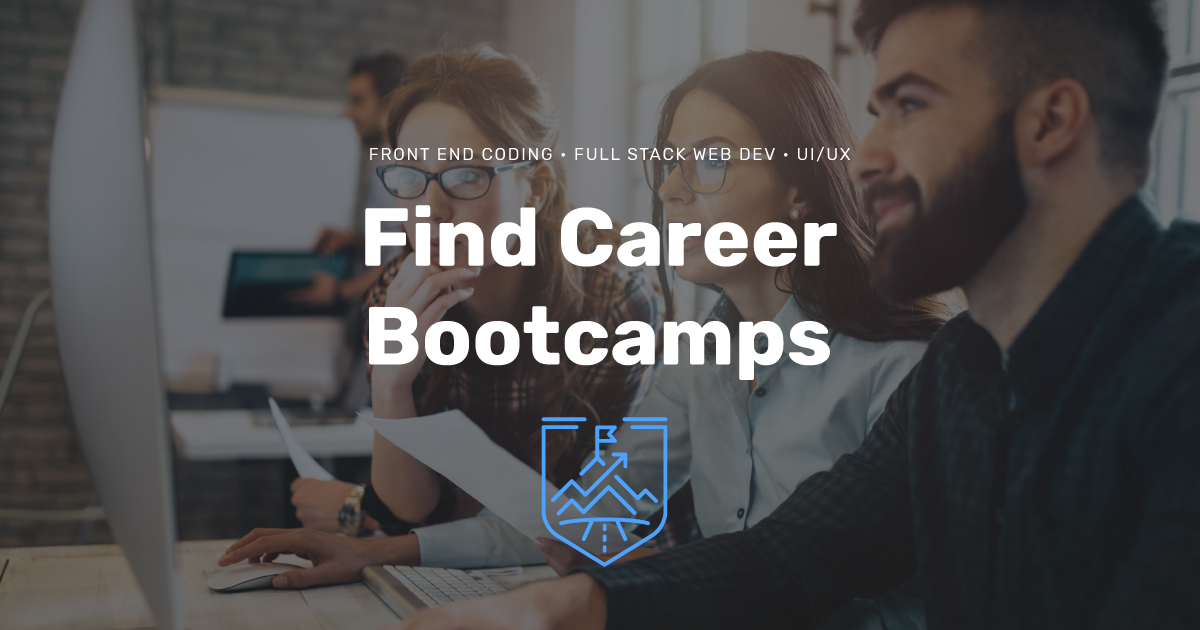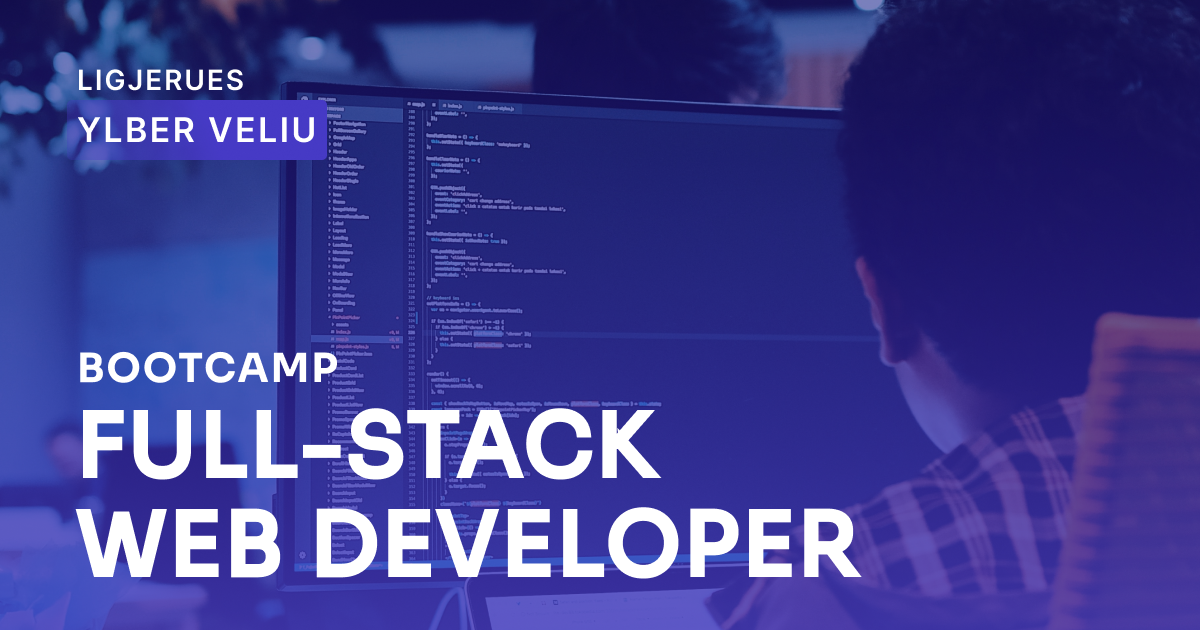Affordable full stack developer bootcamps with job placement are transforming the tech landscape. These intensive programs offer a fast track to a lucrative career, providing in-demand skills and often including crucial job placement assistance. This guide explores the costs, curricula, job prospects, and everything you need to know before enrolling in one of these life-changing programs.
We’ll delve into the financial aspects, comparing bootcamp costs to traditional degrees and exploring financing options. We’ll also examine the curriculum, highlighting the practical skills and technologies covered, and the career services that help graduates land their dream jobs. Real student experiences and reviews will provide valuable insights, painting a clear picture of what to expect.
Bootcamp Cost and Value Proposition
Choosing an affordable full-stack developer bootcamp requires careful consideration of cost versus the potential return on investment (ROI). This section explores the typical pricing, influencing factors, and financial aid options to help you make an informed decision.
Typical Bootcamp Costs and Influencing Factors
The cost of affordable full-stack developer bootcamps typically ranges from $5,000 to $15,000. However, several factors significantly impact the final price. Location plays a crucial role; bootcamps in major tech hubs often command higher tuition fees. The program’s length directly affects cost; longer, more comprehensive programs naturally cost more. Finally, the bootcamp’s reputation and the experience level of its instructors can also influence pricing.
Return on Investment (ROI) Comparison
Comparing the ROI of a bootcamp versus a traditional computer science degree reveals a compelling argument for bootcamps. While a computer science degree can cost significantly more (potentially exceeding $100,000 including opportunity costs), a bootcamp offers a faster path to employment with a substantially lower upfront investment. The shorter duration means less time spent on education and more time earning a salary.
While a degree provides a broader theoretical foundation, a bootcamp’s focused, practical curriculum often leads to quicker job placement.
Looking for a career change? Affordable full stack developer bootcamps with job placement assistance are a great option. It’s a fast-paced world, though – even while you’re learning to code, news like the unfortunate injury to Rep. Virginia Foxx, as reported here: Rep. Virginia Foxx injured outside House chamber in Capitol building , reminds us of life’s unpredictability.
So, get started on your tech career today – these bootcamps can help you build a stable future.
Scholarships and Financing Options
Many affordable bootcamps offer scholarships or financing options to make their programs accessible. These options often include income-share agreements (ISAs), where you pay a percentage of your salary after securing employment, or partnerships with lending institutions offering student loans specifically designed for bootcamp tuition.
Comparison of Affordable Bootcamps
The following table compares three hypothetical affordable full-stack developer bootcamps, illustrating variations in tuition, duration, and job placement rates. Remember that these are examples and actual figures may vary.
| Bootcamp Name | Tuition | Duration (Weeks) | Job Placement Rate (%) |
|---|---|---|---|
| CodeCraft Academy | $8,000 | 12 | 85 |
| TechBoost Bootcamp | $6,500 | 10 | 78 |
| SkillSurge Institute | $10,000 | 16 | 90 |
Curriculum and Skill Development
A comprehensive full-stack developer bootcamp curriculum equips students with the necessary skills to design, build, and deploy web applications. This section details the key skills, projects, technologies, and the balance between theory and practice.
Essential Skills and Project Examples
Bootcamps typically cover front-end development (HTML, CSS, JavaScript, React, Angular, or Vue.js), back-end development (Node.js, Python, Ruby on Rails, Java, or PHP), database management (SQL, NoSQL), and version control (Git). Students often work on individual and group projects, building portfolio-ready applications like e-commerce websites, social media platforms, or real-time chat applications.
Technologies and Frameworks Covered
The specific technologies and frameworks covered vary between bootcamps but generally include popular choices like React, Node.js, and PostgreSQL. The curriculum balances front-end and back-end development, ensuring a well-rounded understanding of the entire application lifecycle.
Theory vs. Practical Application

While some theoretical knowledge is necessary, the emphasis in bootcamps is on practical application. Students learn by doing, building real-world projects that directly apply the concepts they learn. This hands-on approach ensures they are job-ready upon graduation.
Sample Curriculum
A typical affordable full-stack bootcamp might follow a curriculum structured as follows:
- Weeks 1-4: Front-end Fundamentals (HTML, CSS, JavaScript)
- Weeks 5-8: Front-end Frameworks (React)
- Weeks 9-12: Back-end Fundamentals (Node.js, Express.js)
- Weeks 13-16: Databases (PostgreSQL, SQL)
- Weeks 17-20: API Development and Deployment
Job Placement Assistance and Career Services
Many affordable bootcamps offer robust job placement assistance and career services to help graduates transition into the tech industry. This section explores the types of support provided, success rates, and strategies employed.
Types of Job Placement Assistance

Bootcamps typically provide resume and cover letter reviews, mock interviews, networking opportunities, and access to a job board featuring listings from partner companies. Some bootcamps even offer career counseling and mentorship programs.
Career Services Examples
Examples of career services include workshops on effective interviewing techniques, resume optimization strategies, and salary negotiation. Networking events and career fairs connect graduates with potential employers.
Job Placement Success Rates and Employer Connections
While specific job placement success rates vary, many bootcamps boast impressive figures. They achieve this by fostering strong relationships with tech companies and tailoring their curriculum to meet industry demands. Common employers include startups, small businesses, and even large tech corporations.
Potential Employers, Affordable full stack developer bootcamps with job placement

Graduates often find employment at a wide range of companies, from established tech giants to rapidly growing startups. Examples include companies specializing in web development, software engineering, and data science.
- Small to medium-sized businesses (SMBs) seeking in-house developers
- Startups looking for versatile full-stack engineers
- Larger tech firms hiring for specific projects or roles
Student Reviews and Testimonials
Understanding the student experience is crucial when selecting a bootcamp. This section presents anonymized testimonials, highlighting both challenges and successes, and summarizing common themes from student feedback.
Anonymized Student Testimonials
“The bootcamp was intense, but the instructors were incredibly supportive. I felt prepared for my job search, and I landed a job within two months of graduation.”
-Anonymous Graduate
“The networking opportunities were invaluable. I made connections that led to my current role.”
-Anonymous Graduate
Looking for a fast track to a tech job? Affordable full stack developer bootcamps with job placement assistance are a great option. But if you’re just starting out, check out some foundational knowledge first by exploring top-rated IT courses for beginners with career guidance to build a solid base. Then, you’ll be even better prepared to tackle a full stack bootcamp and land that dream developer role!
Challenges and Successes
Common challenges include the fast-paced learning environment and the intensity of the program. However, many graduates report feeling well-prepared for the job market and cite the supportive community and career services as key factors in their success.
Support Systems and Networking
Bootcamps provide various support systems, including mentorship programs, peer support groups, and access to career counselors. These resources help students navigate the challenges of the program and the job search.
Summary of Common Themes
- Intense but rewarding learning experience
- Strong emphasis on practical skills and project-based learning
- Supportive instructors and career services team
- Valuable networking opportunities
- High job placement rates
Bootcamp Accreditation and Reputation: Affordable Full Stack Developer Bootcamps With Job Placement
Choosing a reputable and accredited bootcamp is essential for ensuring the quality of education and increasing the likelihood of successful job placement. This section discusses the importance of accreditation and how to evaluate a bootcamp’s reputation.
Importance of Accreditation and Certifications
Accreditation by recognized organizations indicates that the bootcamp meets certain quality standards. While not all bootcamps are accredited, a strong reputation, positive reviews, and demonstrable job placement success can be equally important indicators of quality.
Evaluating Bootcamp Reputation
Researching a bootcamp’s reputation involves examining online reviews, checking student testimonials (while being mindful of potential biases), and investigating their job placement success rates. Look for transparency in their curriculum and teaching methods.
Researching Legitimacy and Success Rate
Check independent review sites, explore alumni networks, and contact current students to gather comprehensive information. Look for evidence of strong employer relationships and a track record of successful job placements.
Comparing Bootcamp Reputations
Comparing the reputations of several affordable bootcamps requires a multi-faceted approach. Consider factors such as accreditation, student reviews, job placement rates, and the overall learning environment.
Verifying Testimonials and Reviews
Be critical of testimonials and reviews. Look for detailed accounts rather than generic praise. Cross-reference information across multiple sources to get a balanced perspective.
Learning Environment and Support Systems
The learning environment and support systems within a bootcamp significantly influence a student’s success. This section describes typical learning environments, support systems, teaching methodologies, and learning styles accommodated.
Typical Learning Environment
Affordable bootcamps often utilize a combination of in-person and online learning, offering flexibility while maintaining a supportive community. Class sizes can vary, but a balance between instructor-led sessions and independent project work is common.
Support Systems
Support systems include mentorship programs connecting students with experienced developers, peer-to-peer learning opportunities, and access to teaching assistants or instructors for individual guidance.
Teaching Methodologies
Bootcamps often employ project-based learning, emphasizing hands-on experience and practical application. Instructors might use a blend of lectures, workshops, and code reviews to facilitate learning.
Learning Styles Accommodated
While the fast-paced nature of bootcamps might not suit all learning styles, many adapt their teaching methods to cater to diverse learners. The focus on practical application can benefit kinesthetic learners, while online resources and self-paced modules accommodate visual and auditory learners.
Ideal Learning Environment
An ideal learning environment combines a supportive community, experienced instructors, a balance of structured learning and independent work, and ample opportunities for feedback and mentorship. A strong emphasis on practical application and project-based learning is also crucial for success.
Last Recap
Choosing the right affordable full stack developer bootcamp is a significant step towards a rewarding career. By carefully considering the factors discussed – cost, curriculum, job placement support, and student reviews – you can make an informed decision. Remember to research programs thoroughly, compare options, and prioritize bootcamps with a proven track record of success. Your future as a skilled full-stack developer is within reach!
Commonly Asked Questions
What are the typical job roles for bootcamp graduates?
Graduates often find roles as Junior Full-Stack Developers, Front-End Developers, Back-End Developers, or Web Developers, depending on their specialization and experience.
How long does it typically take to find a job after graduating?
This varies greatly depending on individual skills, job market conditions, and the bootcamp’s job placement support. Some find jobs quickly, while others may take a few months.
Are there any prerequisites for applying to a bootcamp?
While some basic computer literacy is helpful, many bootcamps don’t require prior programming experience. However, a strong work ethic and willingness to learn are essential.
What if I don’t get a job after completing the bootcamp?
Looking for a career change? Affordable full-stack developer bootcamps with job placement assistance are a great option. While you’re researching, maybe take a quick break to check out the latest Canucks news – Canucks recall Arturs Silovs, Thatcher Demko remains out vs – before diving back into learning about those bootcamps and securing your future.
Remember, a solid coding education can lead to amazing career opportunities!
Many bootcamps offer some level of job placement guarantee or extended support. However, it’s crucial to understand the specifics of their guarantee before enrolling.
